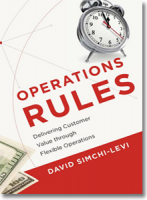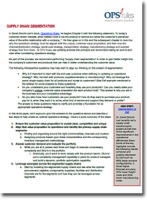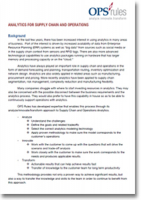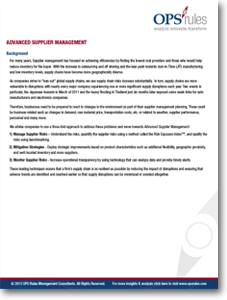Advanced Supplier Management
There are many strategies that can be used to reduce risk: Adding alternative suppliers, increasing production flexibility in the plants, increasing flexibility in sourcing to the plants and adding inventory.
Background
For many years, Supplier management has focused on achieving efficiencies by finding the lowest cost providers and those who would help reduce inventory for the buyer.
With the increase in outsourcing and off shoring and the lean push towards Just-in-Time (JIT) manufacturing and low inventory levels, supply chains have become more geographically diverse.
As companies strive to “lean out” global supply chains, we see supply chain risks increase substantially. In turn, supply chains are more vulnerable to disruptions with nearly every major company experiencing one or more significant supply disruptions each year.
Two events in particular, the Japanese tsunami in March of 2011 and the heavy flooding in Thailand just six months later exposed some weak links for auto manufacturers and electronics companies.
Therefore, businesses need to be prepared to react to changes in the environment as part of their supplier management planning.
These could be business related such as changes in demand, raw material price, transportation costs, etc. or related to weather, supplier performance, personnel and many more.
We advise companies to use a three-fold approach to address these problems and move towards Advanced Supplier Management:
- Manage Supplier Risks – Understand the risks, quantify the supplier risks using a method called the Risk Exposure Index™, and qualify the risks using benchmarking.
- Mitigation Strategies - Deploy strategic improvements based on product characteristics such as additional flexibility, geographic proximity, and well-located inventory and more suppliers.
- Monitor Supplier Risks - Increase operational transparency by using technology that can analyze data and provide timely alerts.
These leading techniques ensure that a firm’s supply chain is as resilient as possible by reducing the impact of disruptions and ensuring that adverse trends are identified and resolved earlier so that supply disruptions can be minimized or avoided altogether.
What’s Related




Favorites





